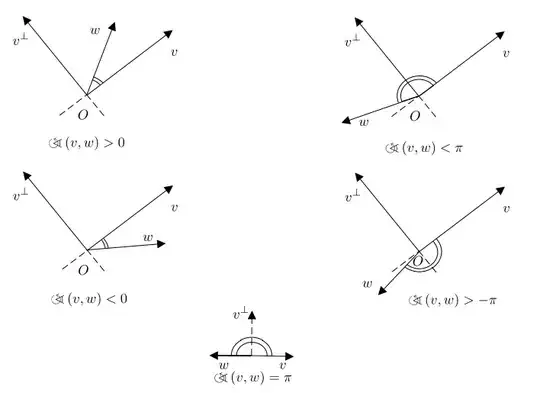$\color{red}{\text{Ordinary definition}: }$Let $f(u,v)$ be the angle (note that $0\leq f\leq \pi$) between the vectors $u$ and $v$ in $\mathbb{R}^2$, uniquely determined by: $$\cos(f(u,v))=\dfrac{\langle u,v\rangle }{||u|| ||v||}.$$
$\color{blue}{\text{Oriented angle definition:}}$ Let $u = (u_1, u_2)$ be a vector in $\mathbb{R}^2$ and define $u^{I} = (-u_2,u_1)$. Then the oriented angle, $a(u,v)$ between two vectors $u$ and $v$ in $\mathbb{R^2}$ is given by:
$a(u,v) = f(u,v)$ if $\langle u^{I},v \rangle \geq0$
$a(u,v) = -f(u,v)$ if $\langle u^{I},v \rangle < 0$
Note that $a \in \ (-\pi,\pi]$
It would appear that this definition cares about whether or not $v$ has "rotated" around $u$ and whether or not that "rotation" was clockwise or not. I don't know whether that's clear/correct, though. Here are some examples:
